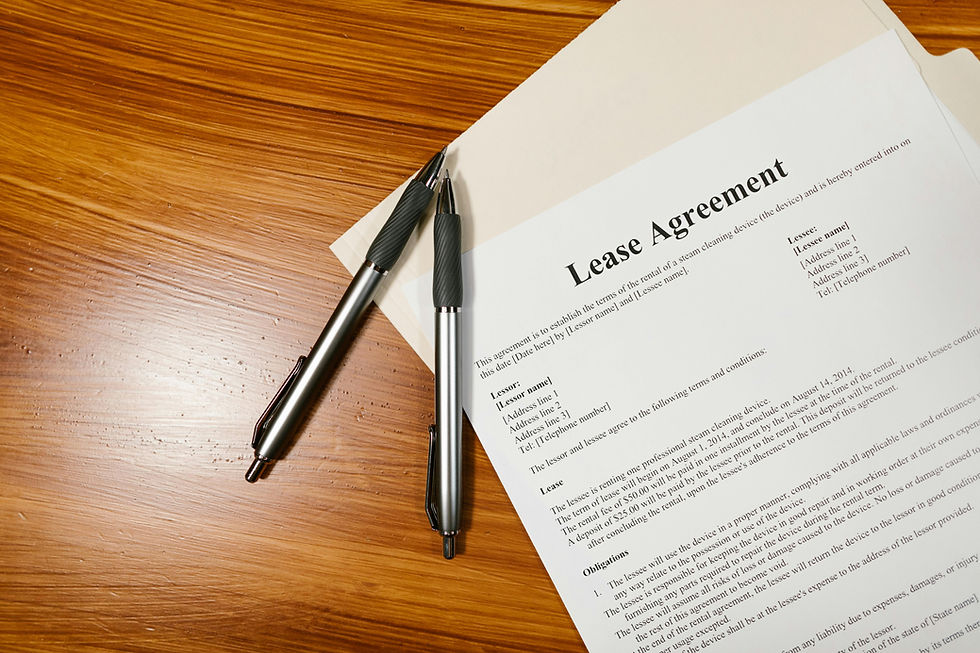Three Options to Get Out of My Office Space
- eweinblatt3
- Jul 26
- 3 min read

Whether due to downsizing, shifting to remote work, or outgrowing your current location, many businesses face the challenge of wanting—or needing—to exit their office lease before the term ends. Walking away isn’t as simple as handing over the keys, especially when long-term contracts and personal guarantees are in place.
Fortunately, according to real estate advisor Ezra Weinblatt, you do have options when it comes to Negotiating an Office Space exit. Each comes with its pros, cons, and financial implications. Here are the three most practical ways to get out of your office space—and how to navigate them effectively.
1. Subleasing Your Office Space
What It Is: Subleasing allows you to rent out your office (or a portion of it) to another tenant for the remainder—or part—of your lease term. You remain the primary leaseholder and responsible to the landlord, but the subtenant pays you rent.
Why It Works:
Generates income to cover your lease obligations.
Provides flexibility—you can sublease part of the space or the full office.
Often the fastest way to reduce your financial burden.
Key Considerations:
Landlord Approval: Most leases require the landlord’s written consent before subleasing.
Negotiating Terms with Subtenant: You’re effectively stepping into the landlord’s shoes—screen your subtenant carefully.
Risk Exposure: If the subtenant defaults, you remain liable.
Ezra Weinblatt’s Tip: When Negotiating an Office Space sublease, structure clear terms, including payment deadlines and maintenance responsibilities. Also, ensure the sublease agreement mirrors key provisions of your original lease to avoid conflicts.
2. Lease Buyout Agreement
What It Is: A lease buyout is a negotiated agreement where you pay the landlord a lump sum to terminate your lease early. In exchange, you’re released from further obligations.
Why It Works:
Provides a clean break with no ongoing responsibilities.
Avoids the hassle of finding a subtenant.
Can sometimes be negotiated at a discount compared to the full lease term.
Key Considerations:
Cost: Expect to pay a percentage of the remaining rent plus potential fees.
Timing: The landlord may be more open if market demand is strong and they can quickly re-lease the space.
Negotiation: Be prepared to justify your request with market data or changing business needs.
Ezra Weinblatt’s Tip: Bring solid arguments to the table—such as a soft market or new tenant interest in your space—when Negotiating an Office Space buyout. A seasoned broker like Ezra Weinblatt can often negotiate better terms on your behalf.
3. Lease Assignment
What It Is: A lease assignment involves transferring all your rights and obligations under the lease to a new tenant, who takes over completely. Unlike a sublease, you exit the contract entirely if the landlord consents.
Why It Works:
Transfers full liability to the assignee (pending landlord approval).
You may be able to negotiate an assignment fee with the new tenant.
Avoids ongoing management of a sublease arrangement.
Key Considerations:Landlord Consent: Most leases require landlord approval and may impose strict conditions.
Release of Liability: Confirm in writing that you are fully released from liability upon assignment.
Market Conditions: You’ll need to find a qualified replacement tenant willing to assume the lease terms.
Ezra Weinblatt’s Tip: When Negotiating an Office Space assignment, clarify all terms with both the landlord and new tenant. Engage a qualified attorney or broker to ensure the assignment agreement protects your interests.
Bonus Option: Negotiating a Lease Amendment
Sometimes, you don’t need a full exit. Instead, consider Negotiating an Office Space amendment to reduce square footage, extend the lease on better terms, or adjust rent. According to Ezra Weinblatt, many landlords are open to creative solutions that help retain tenants while addressing their evolving needs.
Conclusion: Be Strategic and Informed
Getting out of an office lease requires careful planning, proactive communication with your landlord, and smart negotiation. Whether you choose to sublease, buy out, assign, or renegotiate, understanding the legal and financial implications is key.
Ezra Weinblatt advises businesses to seek expert guidance when Negotiating an Office Space exit. With the right strategy, you can minimize financial exposure, avoid legal pitfalls, and transition smoothly—whether you're downsizing, relocating, or pivoting your business model.


